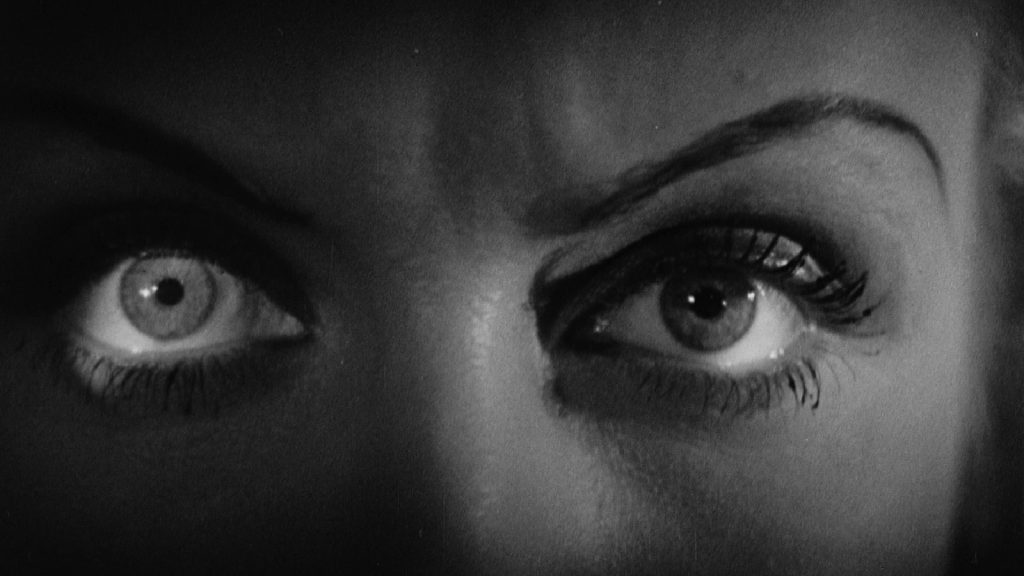
If ever a film’s reputation preceded it, Victor Sjöström’s The Phantom Carriage is that film. On more than one occasion, Charlie Chaplin called it the best motion picture ever made, and in a 1924 interview he deemed Sjöström “the greatest director in the world.” Fellow Swede Ingmar Bergman, a generation younger than Sjöström, first watched The Phantom Carriage at age 15 and came away “shaken to the core”; thereafter, he returned to it at least once a year, often introducing what he called “the film of all films” to his acolytes. Its influence, like the titular vehicle, casts a ghostly glow over Bergman’s body of work, from the presence of Sjöström in the central role of his 1957 masterpiece Wild Strawberries (as a man who dreams of a coach freighted with his own corpse) to the sympathetic depiction of the Grim Reaper in The Seventh Seal (also 1957!)—a figure nonetheless referred to as a “strict master,” the same term used in The Phantom Carriage. Plot scaffolding and key images from Sjöström’s archetype recur in works as far-flung as Capra’s It’s a Wonderful Life (1946) and Kubrick’s The Shining (1980).
The Phantom Carriage’s own inspiration derives from Nobel Prize–winning author Selma Lagerlöf’s 1912 novel Körkarlen (The Coachman, released in English as Thy Soul Shall Bear Witness!), which likely sampled from Dickens’s A Christmas Carol. Here the Scrooge surrogate is David Holm (played by Sjöström himself), a sodden, tubercular reprobate murdered on New Year’s Eve by his drinking companions. According to local lore, the final person to die before midnight on December 31 must drive Death’s carriage for the next 12 months, reaping souls from freshly (and often unnaturally) departed bodies and stowing them in his conveyance, pictured not as an elegant coach but as a shabby, two-wheeled cart like that of a ghetto ragpicker, drawn by an exhausted horse. Holm, whose last living act was to break his promise to visit Edit, the Salvation Army worker who once cared for him (and who now lays dying from the consumption he infected her with), must spend the next few hours revisiting his cruel and squandered life with the outgoing coachman—ironically, the man who led the formerly upright and family-oriented Holm astray.
The film’s indelible image—perhaps the most representative of all early Scandinavian horror—is of the transparent Angel of Death driving his spectral carriage across the countryside, a rustic windmill in the background plainly visible through his milky frame. The special effects required to produce this tableau in 1921, a decade before the advent of optical printing, took months to devise, with trailblazing DP Julius Jaenzon responsible for the double-exposure photography by which the wagon appears to roll above ocean waves, as the henchman dives underwater to retrieve the soul of a drowned man from its corporeal shell. No less sophisticated is the flashback structure, with the forgiveness and renewal of Dickens’s Christmas Day replaced by the bitter regret and surrender of another misspent year’s end. Though a moralistic seam does run through the film’s fabric (via the saintly Edit, and the pro-temperance message that evidently placated the Swedish censors into lifting their ban on the occult), Sjöström’s firsthand impressions of Stockholm’s slum-dwelling alcoholics (formed while embedded among them) yield a realistic social tapestry that keeps caricature at bay. This is especially true in his own harrowing portrayal of a man whose humanity is not tainted by avarice but rotted away by self-abasement and despair. When the daughter-in-law of Sjöström’s character in Wild Strawberries declares, “All along the line, there’s nothing but cold and death and loneliness; it must end somewhere,” she might very well be giving David Holm’s eulogy.

is the copy editor for Field of Vision’s online journal Field Notes and for Film Comment magazine, as well as a frequent contributor to Film Comment, Metrograph’s Journal, and other publications. He wrote a thesis on depictions of old age in American cinema.
Unfairly remembered more for his staggering innovations with makeup than for his equally staggering dramatic skills, Lon Chaney is the absent father of horror cinema.
BY STEVEN MEARS | July 15, 2022
Blue Beard is a glutton. He likes food and female orifices, in that order, which doesn’t mean he doesn’t have a major thing for the latter in this early 1901 French-film dazzler...
BY COLIN FLEMING | February 16, 2025
There is a particular allure to the silent horror movie—the sense that, as a viewer, you haven’t merely stumbled upon something but perhaps you’ve unearthed it.
BY MICHAEL KORESKY | November 30, 2023

This pre-Code offering packs a lot of story into its typically brisk running time, with several plot threads weaving together a (not always successful) tapestry of spooky and criminal doings.
READ MORE >
BY ANN OLSSON | Month 00, 2021

In what could be the fastest-resulting rape revenge movie, a drunken lout brutally forces himself on Ida, the young woman who doesn't return his affections, during a party over Labor Day.
READ MORE >
BY LAURA KERN | Month 00, 2021

Beast is a lot of movies in one package - fractured fairy tale, belated-coming-of-age story, psychological drama, regional horror film - but above all it's a calling card for its leading lady, Jessie Buckley.
READ MORE >
BY LAURA KERN | Month 00, 2021